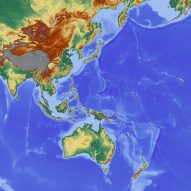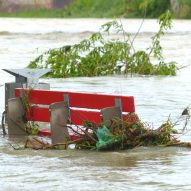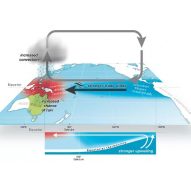 March 31, 2022 11:45 am
Published by Climate Extremes
March 31, 2022 11:45 am
Published by Climate Extremes
The ARC Centre of Excellence for Climate Extremes is working to understand marine heatwave predictability.
 March 30, 2022 9:22 am
Published by Climate Extremes
March 30, 2022 9:22 am
Published by Climate Extremes
Want to go to space? It could cost you.
 March 16, 2022 11:04 am
Published by Climate Extremes
March 16, 2022 11:04 am
Published by Climate Extremes
Climate Extremes is leading research that will ultimately help businesses and governments better assess the risks posed by compound events.
 March 14, 2022 9:08 am
Published by Climate Extremes
March 14, 2022 9:08 am
Published by Climate Extremes
The year 2021 saw a wide range of extreme weather and climate events impacting Australia.
 March 8, 2022 2:49 pm
Published by Climate Extremes
March 8, 2022 2:49 pm
Published by Climate Extremes
At any one time, Earth’s atmosphere holds only about a week’s worth of rain. But rainfall and floods have devastated Australia’s eastern regions for weeks and more heavy rain is forecast. So where’s all this water coming from?
 March 7, 2022 4:20 pm
Published by Jonathan Brown
March 7, 2022 4:20 pm
Published by Jonathan Brown
Tipping points exist in the climate system, and it is very unlikely that all tipping points are known. Different tipping points are understood with different levels of confidence, they operate on different timescales, can interact to trigger cascades of abrupt changes, and some tipping point changes are irreversible on timescales of centuries to millennia.
 March 3, 2022 11:33 am
Published by Jonathan Brown
March 3, 2022 11:33 am
Published by Jonathan Brown
Conditions in the Indian Ocean can affect the risk of Australia experiencing droughts, floods, marine heatwaves and bushfires and alter the prospects for rainfed agriculture in some parts of the country. Reliable forecasts of conditions in the Indian Ocean a season in advance would help us predict upcoming changes in the risk of climate extremes in some parts of Australia. However, producing such forecasts requires us to better understand, and more accurately model, relevant Indian Ocean climate processes. There is... View Article
 March 3, 2022 10:27 am
Published by Climate Extremes
March 3, 2022 10:27 am
Published by Climate Extremes
While the role of climate change is hard to pin down in Australia’s biggest floods, we know flooding often strikes our east coast. Building greater resilience to severe flooding would help lessen their impact.
 February 27, 2022 1:17 pm
Published by Climate Extremes
February 27, 2022 1:17 pm
Published by Climate Extremes
Every little bit we do to limit carbon emissions might mean one less flood and one less person who has to rebuild.
 January 20, 2022 1:39 pm
Published by Jonathan Brown
January 20, 2022 1:39 pm
Published by Jonathan Brown
Rapid decarbonisation is needed to reduce further warming of the planet. It’s not too late to avoid the most dangerous climate change impacts.










